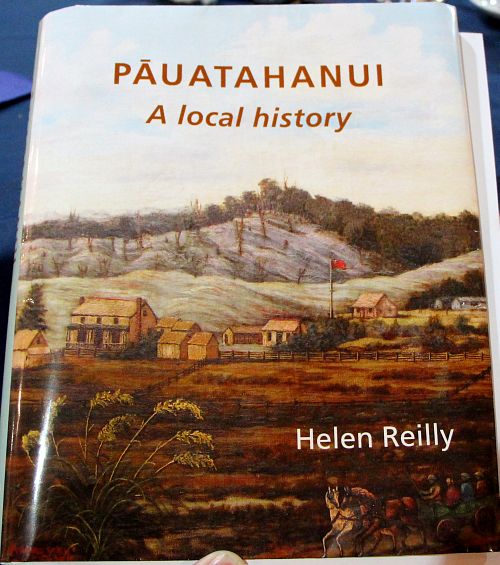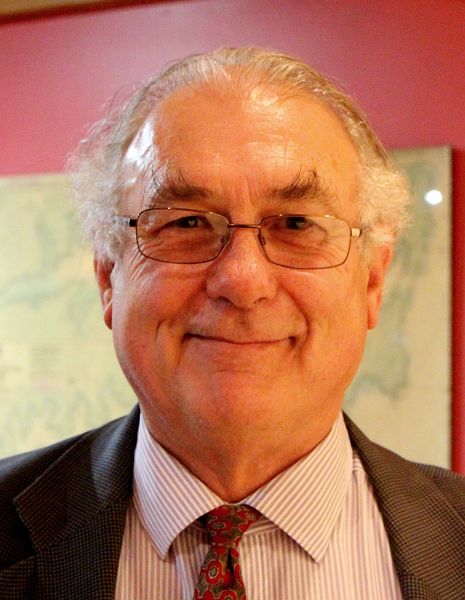Early History of Pauatahanui

Christine Stanley, who is a resident of Pauatahanui, was recognised last month with a Civic Award for her outstanding voluntary service to the Porirua community for her work in recreation and education. She has been involved in voluntary work in the Pauatahanui community for many years and her services continue to be sought, especially in connection with environmental management in the Porirua Harbour and its catchments.
Christine was one of three co-founders and a committee member of Pauatahanui Early Education Society from 1985-1989. This was New Zealand’s first multi-purpose preschool incorporating a crèche, kindergarten and playgroup.
Christine continued her voluntary work with the community as Chair, then Treasurer of the Pauatahanui Residents Association. She was a Trustee and voluntary telephone counsellor of the Wellington Sexual Abuse Help Foundation and co-founder and Chair of the Guardians of Pauatahanui Inlet.
Christine will take us through a short history of the area, using a selection of early images of Pauatahanui and Whitby, all taken from a full collection of photographs for a soon-to-be-published book on the history of the area.
This book is the culmination of four years’ work by a team that included local volunteers and a professional historian. The publishing process has brought together many photos, paintings, drawings and anecdotes, some of which Christine will share with us. Some are from private collections not seen publicly before.
Remembering the way we were
by David Pine
As society progresses, it is all too easy to forget the way things were before. This was the dilemma facing long time Pauatahanui resident Christine Stanley. About 5 years ago she and a group of her friends realised that with all of the development taking place around the Pauatahanui inlet, it was vital that the history of the district be properly recorded without delay.
 Speaking to members of Plimmerton Rotary on 24th September, Christine described their almost completed quest to create a written and pictorial record of the Pauatahanui area, which will be entitled “Pauatahanui – A local history”. This will shortly be available in a large-sized and sumptuously illustrated volume.
Speaking to members of Plimmerton Rotary on 24th September, Christine described their almost completed quest to create a written and pictorial record of the Pauatahanui area, which will be entitled “Pauatahanui – A local history”. This will shortly be available in a large-sized and sumptuously illustrated volume.
Christine and her colleagues decided to divide their story into a series of eras, from pre Maori times, leading to the period 1847 to 1879 when Pauatahanui became a thriving community, then 1880 to 1913 when it was really in its prime. The area’s rise to prominence was due to its being a natural first-night stopover for people heading north out of Wellington. In its heyday the village boasted three substantial hotels along with several other buildings housing businesses which served the needs of travellers and their horses.
There followed the “difficult years” from 1914 to 1945. This was the time of the two world wars and it also saw construction of the Paremata road and rail bridges across the mouth of the inlet, enabling those heading north from Wellington to by-pass Pauatahanui altogether. The next era from 1946 onwards was a time of landscape transformation – a prolonged building boom on both sides of the inlet but mostly on the Whitby side. This process continues today.
Christine spoke about the many different ways in which the name of the district had been spelt. In 1846 it was Pawatanui, and eventually after some 20 different variations, has become Pauatahanui.
The book contains large numbers of marvellously detailed photos in both black and white and colour, along with several excellent paintings, as well as interesting charts and maps illustrating facets of life in the district. Among the subjects illustrated are the first opening day at Judgeford Golf Course, St Josephs Church complete with its separate Catholic and non Catholic burial grounds, a fully laden stage coach arriving in Pauatahanui village with the inlet and hills in the background, and the Pauatahanui Brass Band with members in their full regalia (including plumed hats).
It is expected that the book will be available within the next few months.
Snippets
Board update:
Treasurer: Last year’s accounts are with the auditors.
Youth: PR is to work with Youth committee re publicising to the members all their activities.
Projects: Two projects in the near future are Kennel Club Parking in the capable and organised hands of Gwyn Akeroyd and the Pauatahanui Inlet Clean up on Sunday 10 November with the experienced Angus Langbein.
PR: An on-going process. There has been lots of publicity in local newspapers and a good outcome with the new website.
Admin: Upcoming events: Tuesday 5 November: Melbourne Cup day at and with Mana Cruising Club with possibility of a Casino evening to follow. Saturday 9 November evening: DG's cluster visit at the Porirua Club. As this will take the place of our normal weekly meeting there will be no club meeting on the following Tuesday (12 November). Thursday 5 December is our Christmas function at Seasons Restaurant on Highway 1 at Waikanae.
Eureka!
 The Eureka! Symposium was born out of an inspiration of Francis Wevers of the Rotary Club of Wellington when had his own Eureka moment in Christchurch a couple of years ago.
The Eureka! Symposium was born out of an inspiration of Francis Wevers of the Rotary Club of Wellington when had his own Eureka moment in Christchurch a couple of years ago.
The Eureka! Symposium is to showcase and recognise the achievement of excellence in science communication by young people.
It aims to identity and foster young leaders who, through their knowledge of science, technology, engineering or mathematics, their entrepreneurial vision, and their persuasive communication skills, will bring about the New Zealand foreseen by Sir Paul Callaghan: “the most beautiful, stimulating and exciting place in the world in which to live.”
Hadleigh Frost won the premier award at the inaugural Sir Paul Callaghan Awards for Young Science Orators. In his first year of study at the University of Canterbury, Hadleigh won the award after delivering a presentation titled “Building the Brain” in which he discussed the opportunities there were in New Zealand to develop artificial intelligence for future economic and social benefit using the talents of home grown scientists, mathematicians and IT specialists.
Rotary’s involvement is to set up regional organising committees to select young scientists from secondary school students and university under graduates to go forward to the finals at the annual forum.
This is a programme which ticks lots of boxes for New Zealand’s youth.
